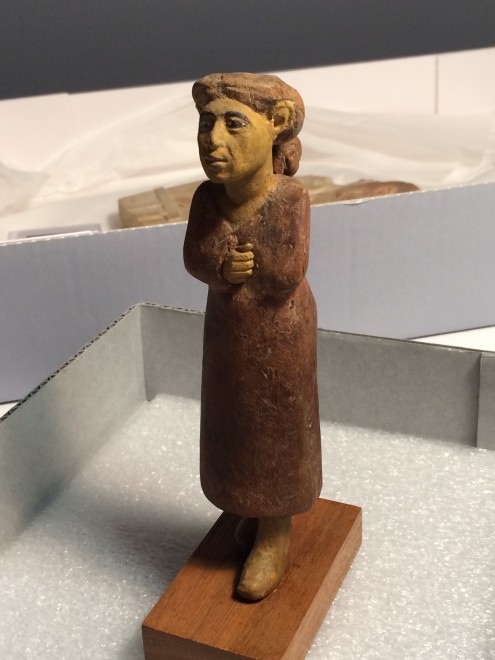Almost 4,000 years ago, a woman travelled hundreds of kilometres to Egypt carrying an infant child on her back, seeking to trade or perhaps to settle there, presumably looking for a better life.
![Wooden statuette of a foreign woman excavated at Beni Hassan, Egypt [A.1911.260].](https://blog.nms.ac.uk/app/uploads/2015/12/Wooden-statuette-660x396.jpg)
They were immortalised in an extraordinary wooden statuette, which was excavated in a tomb at Beni Hassan in Middle Egypt thousands of years later. She stands only 15 cm tall but her face is full of character. Her appearance is very different from depictions of ancient Egyptians: her skin is yellow and she wears a long red woollen cloak and boots.
This type of small wooden statuette was usually part of a larger group of wooden figurines depicting scenes of food production and craftsmanship on the tomb owner’s estate, so they may originally have been part of a larger processional scene. The woman and child are also unusual in the level of detail in the carving, which is unlike most other wooden tomb models. The modelling of the woman’s face is deeply furrowed and highly expressive.
![A wooden tomb model of a bakery from Beni Hassan, Egypt [A.1914.71].](https://blog.nms.ac.uk/app/uploads/2015/12/bakery-660x461.jpg)

The statuette of the foreign woman and child, the only one of its kind ever discovered in Egypt, eventually made its way to National Museums Scotland, and more recently it has travelled further than ever before, along with other National Museums Scotland’s objects, to be part of a landmark exhibition at the Metropolitan Museum of Art in New York. Ancient Egypt Transformed focusses on the Middle Kingdom (c. 2030–1650 BC), a period of Egyptian history that was as celebrated in ancient Egyptian times as it is largely unknown to wider audiences today. Its literature became the classic poems and stories that continued to be read in Egypt for over a thousand years, while its powerful kings became the stuff of ancient legend.
The Middle Kingdom arose out of a previous period of disintegration and civil war. Earlier kings used their immense wealth and power to build the astonishing pyramids at Giza, but their power had waned and control of Egypt became fragmented. From among the warring local rulers, finally one emerged victorious: King Nebhepetre Montuhotep II of Thebes (c. 2051–2000 BC), the founder of the Middle Kingdom. The Egyptian concept of kingship unifying the Two Lands of Upper and Lower had been shaken, but the victory of Montuhotep II reinvigorated it. His innovative mortuary temple at Deir el-Bahri on the west bank of Thebes became a symbol of reunification and the focal point of building activity for many subsequent rulers who sought to align themselves with his successful image.
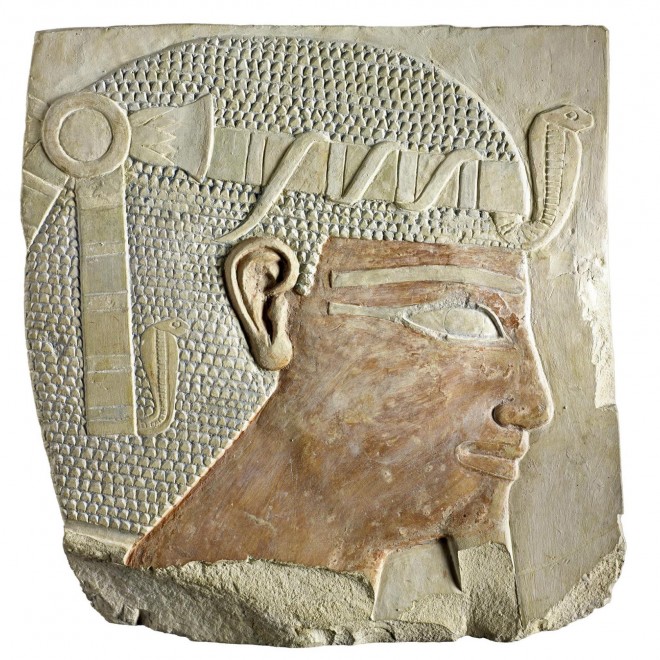
The Metropolitan Museum exhibition provided the opportunity for the reunification of several relief fragments from the tomb of the wife of Montuhotep II, Queen Neferu. Met curator Kei Yamamoto spotted the connection between the two fragments and they were re-joined in the exhibition for the first time since antiquity. The scene depicts a procession of offering bearers carrying decorated wooden boxes, containing cosmetics, jewellery, and clothing, to the tomb to provision the queen in the afterlife. Carefully crafted mounts were designed to hold the relief fragments in position as close as possible without actually touching. In the exhibition, they are displayed alongside actual examples of beautiful wooden boxes, wonderfully preserved, just like the ones depicted on the tomb wall of the queen.
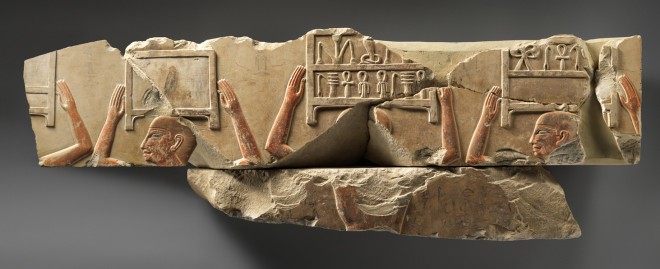
The Middle Kingdom witnessed an artistic renaissance, including extraordinary humanising royal sculpture, which subsequently provided inspiration for the statuary of private individuals.
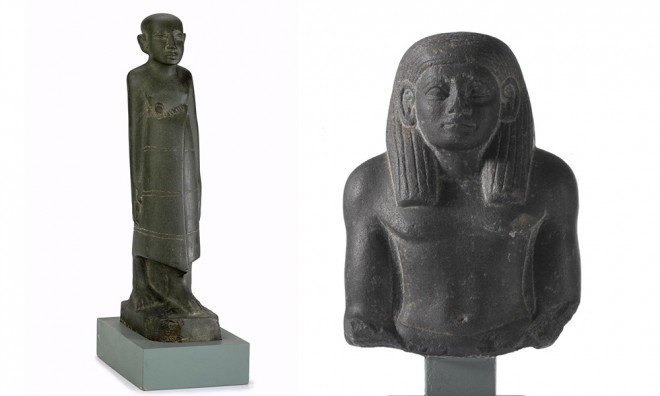
Some of the finest Middle Kingdom craftsmanship produced extraordinarily delicate gold jewellery. The exquisitely crafted gold catfish pendant currently on loan from National Museums Scotland to the Met is astonishingly lifelike in its detail, achieved through careful chasing, engraving and almost invisible soldering. It was excavated in the tomb of a young girl at Haraga near the pyramid of King Senwosret II, along with other gold jewellery items that have recently been the subject of scientific analysis at the museum.
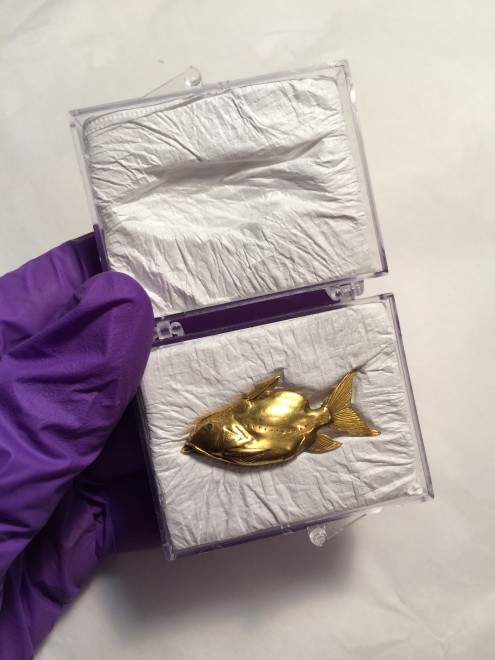
Our museum conservators carefully packed the objects to ensure their safe transport to New York, and it was a thrill to finally unpack them and reveal them to eagerly awaiting colleagues at the Met, where they took their place among a carefully curated selection of over 230 objects documenting an extraordinary, transformative period in Egyptian history. See them on display at the Metropolitan Museum of Art until Sunday January 24, 2016, or after their return, when they will form part of our Ancient Egypt gallery currently in development for 2018.
